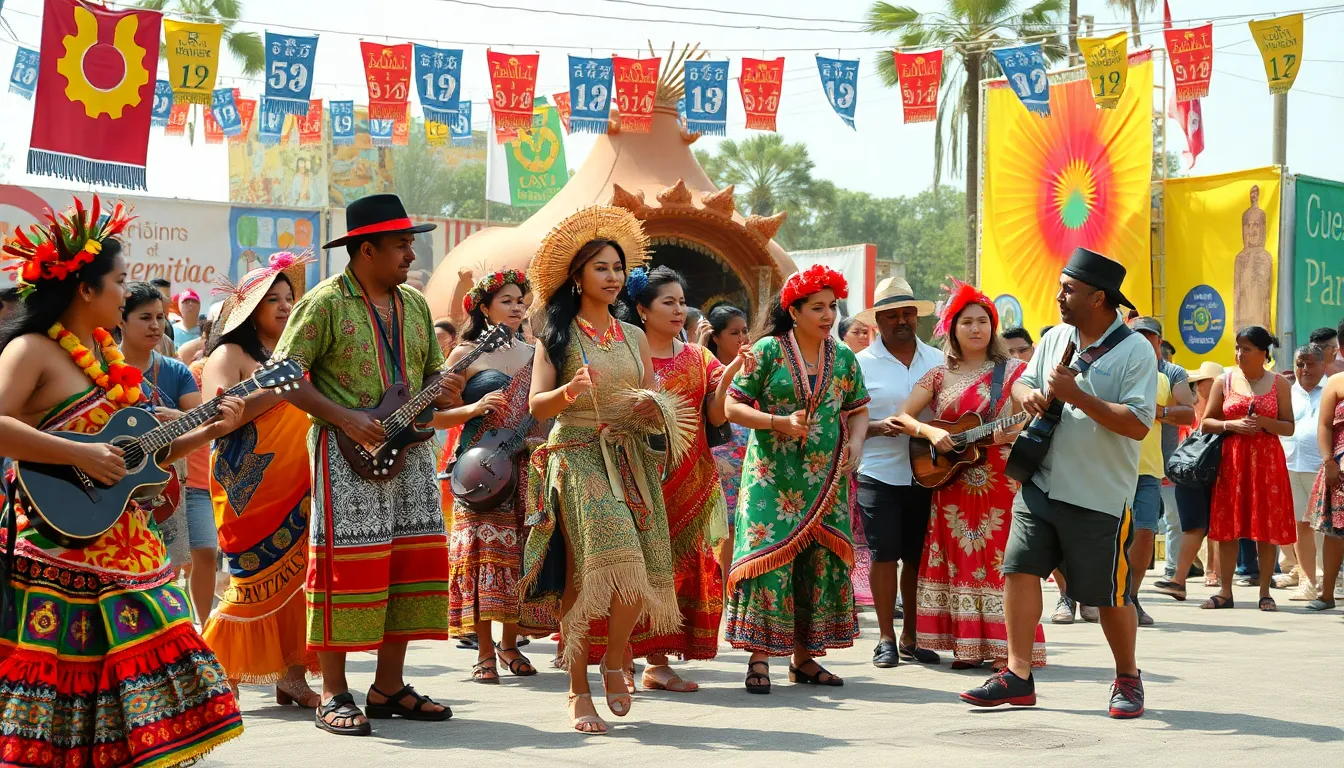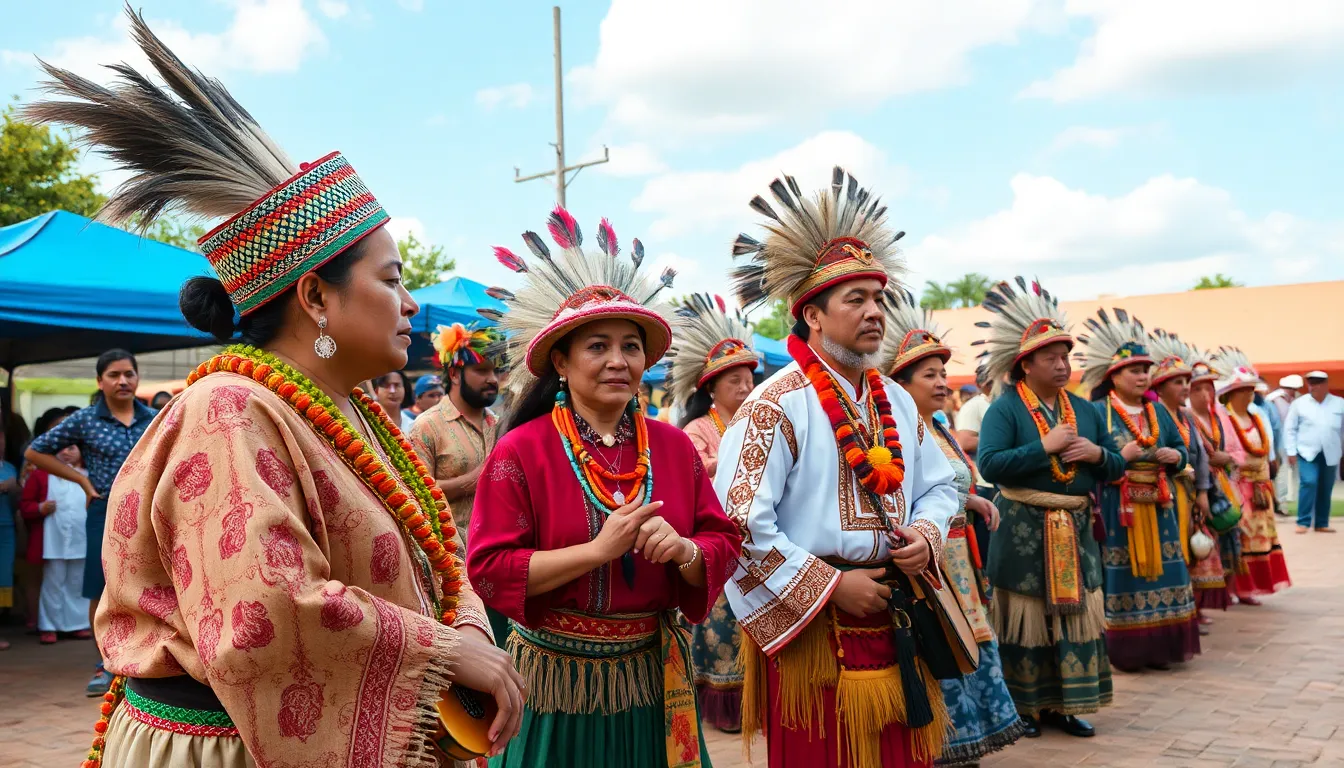Camilitasu is a fascinating cultural phenomenon that has captured the attention of many. Originating from a rich tapestry of traditions, it represents a unique blend of art, music, and social expression. This vibrant practice not only reflects the creativity of its participants but also serves as a powerful medium for storytelling and community bonding.
In recent years, the popularity of camilitasu has surged, drawing in enthusiasts from diverse backgrounds. As people seek deeper connections to their heritage and the arts, this captivating form of expression offers an inviting space for exploration and engagement. Whether one is a seasoned participant or a curious newcomer, understanding camilitasu opens the door to a world of creativity and cultural appreciation.
Table of Contents
ToggleOverview of Camilitasu
Camilitasu represents a fusion of art, music, and social expression, rooted in cultural storytelling. This phenomenon engages individuals in creative exploration, fostering connections among diverse communities. Participants often delve into various artistic mediums, including visual arts, dance, and music, each contributing to a rich cultural tapestry.
Recently, interest in camilitasu has surged, drawing those eager to reconnect with their heritage. Events centered around camilitasu cultivate environments where both seasoned artists and newcomers can collaborate and celebrate their cultural identities. The inclusivity of camilitasu encourages active participation across generations, enriching the overall experience.
Through workshops, performances, and exhibitions, camilitasu showcases various talents and perspectives. Shared narratives through this cultural expression reinforce community bonds, emphasizing the significance of heritage in contemporary society. The vibrant energy surrounding camilitasu not only preserves cultural traditions but also inspires innovative artistic expressions among participants.
History and Origin
Camilitasu has deep roots in cultural expression, evolving through various artistic influences over time. Its development reflects community values and historical contexts.
Cultural Significance
Camilitasu plays a crucial role in preserving cultural heritage. It fosters identity through storytelling, inspiring connection among participants from diverse backgrounds. Through performances and workshops, generations engage with heritage, reinforcing communal ties. The integration of visual arts, music, and dance highlights cultural narratives, cementing its place in societal frameworks.
Evolution Over Time
Camilitasu has transformed significantly since its inception. Initially rooted in specific cultural practices, it adapted to contemporary societal needs, incorporating modern artistic elements. Technological advancements and globalization influenced its growth, attracting wider audiences. Recent decades witnessed a surge in grassroots movements celebrating camilitasu, revitalizing traditional components. As it continues to evolve, it embraces innovation while remaining anchored in cultural authenticity.
Characteristics of Camilitasu
Camilitasu exhibits distinct characteristics that contribute to its vibrant cultural significance. These attributes encompass unique features, variations, and types that enhance its appeal across diverse communities.
Unique Features
Camilitasu incorporates several unique features that set it apart from other cultural expressions.
- Multidisciplinary Approach: Camilitasu integrates visual arts, music, and dance, encouraging a blend of creative expressions that enrich storytelling.
- Community Involvement: Camilitasu thrives on active participation, inviting individuals of all ages to engage collaboratively, fostering a sense of belonging.
- Dynamic Expressions: Camilitasu evolves continuously, adapting to current social issues and trends while maintaining its cultural core.
- Interactive Formats: Workshops and performances allow participants to learn and share skills, enhancing their connection to heritage through hands-on experiences.
Variations and Types
Camilitasu encompasses various forms and adaptations, reflecting the diversity of cultural backgrounds.
- Traditional Camilitasu: Rooted in historical practices, this variation emphasizes age-old stories and techniques passed down through generations.
- Contemporary Camilitasu: This type embraces modern artistic influences, incorporating elements like digital media and innovative performance styles.
- Regional Camilitasu: Adaptations arise based on geographic or cultural contexts, showcasing unique traditions while retaining the overarching camilitasu identity.
- Collaborative Camilitasu: This form brings together artists from different backgrounds, highlighting the fusion of styles and perspectives, resulting in enriched artistic expressions.
Benefits of Camilitasu
Engagement in camilitasu offers numerous advantages encompassing health improvements and positive environmental impacts. Participants experience a blend of physical, mental, and social benefits while contributing to a more sustainable future.
Health Benefits
Participating in camilitasu enhances physical health through movement and artistic expression. Activities like dance provide cardiovascular benefits, improving stamina and flexibility. Mental well-being flourishes through creative outlets, reducing stress and anxiety. Social connections formed during events strengthen emotional health, fostering a sense of belonging. Studies show that engaging in artistic activities can lead to increased happiness and life satisfaction.
Environmental Impact
Camilitasu promotes environmental awareness by encouraging sustainable practices within artistic events. Many initiatives incorporate eco-friendly materials and methods, minimizing waste and promoting recycling. Events often focus on themes of nature and conservation, educating participants on ecological issues. Local communities participate in beautification projects, using art to transform public spaces sustainably. This fusion of creativity and environmental stewardship fosters a deeper connection between culture and nature while advocating for a healthier planet.
How to Use Camilitasu
Camilitasu encompasses various forms of engagement, allowing individuals to connect creatively with cultural practices. Utilizing its diverse aspects can enhance understanding and appreciation of community heritage.
Traditional Uses
Traditional uses of camilitasu often involve storytelling through visual arts, dance, and music. Participants engage in communal gatherings where they share tales from their cultural history. Ritual performances routinely occur during festivals, showcasing regional customs. Workshops emphasize ancestral techniques, enabling participants to learn crafts such as weaving or pottery. These activities not only preserve cultural knowledge but instill a sense of pride and identity among participants.
Modern Applications
Modern applications of camilitasu expand its reach and relevance. Digital platforms facilitate virtual exhibitions, allowing broader audiences to experience artistic expressions. Collaborative projects encourage artists from various backgrounds to merge styles, resulting in innovative works. Community events regularly incorporate themes like social justice or environmental conservation, reflecting contemporary issues. Artistic installations in public spaces promote accessibility, inviting public interaction with camilitasu. Through these adaptations, camilitasu continues to thrive in today’s cultural landscape.
Conclusion
Camilitasu stands as a vibrant testament to the power of cultural expression and community engagement. Its unique blend of art forms fosters connection and creativity among participants, bridging generations and backgrounds. As it continues to evolve, camilitasu not only preserves rich traditions but also adapts to modern societal needs.
Engaging with camilitasu opens doors to personal growth and cultural appreciation. Through its multidisciplinary approach, it nurtures artistic talents while promoting environmental consciousness. This dynamic cultural phenomenon encourages individuals to explore their heritage and contribute to a collective narrative that celebrates diversity and unity.




